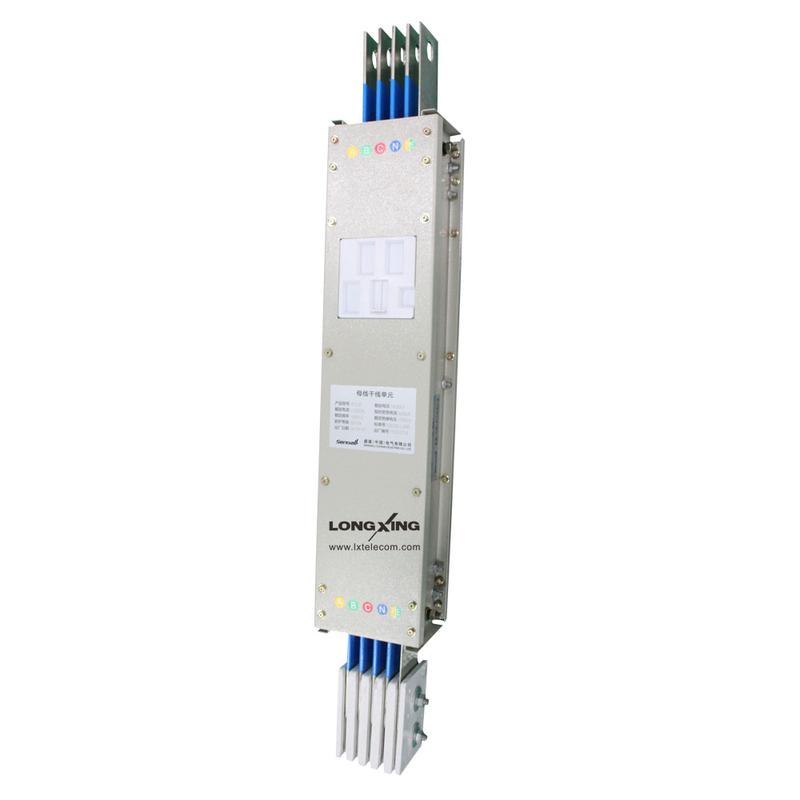In modern electrical systems, safety and efficiency are two key components that are constantly being optimized. Whether it’s for a residential building, industrial setup, or commercial space, ensuring the proper distribution of power with minimal risk is a priority. One solution that has revolutionized the way electrical power is transmitted within buildings is the Busbar Trunking System. This system not only provides a streamlined approach to electrical distribution but also enhances both safety and efficiency in significant ways.
What is a Busbar Trunking System?
A Busbar Trunking System is an assembly that includes copper or aluminum busbars, enclosed in a protective casing, designed to conduct large amounts of electricity. It’s a highly flexible and efficient way to distribute power within a building or structure. Busbar systems are widely used in various industries, from manufacturing plants to data centers, due to their ability to handle high voltage and amperage with minimal space requirements.
Why Safety is Critical in Electrical Installations
Safety is paramount in any electrical installation. Faulty or inefficient electrical systems can lead to a range of problems, from power outages to severe safety hazards such as fires or electrocution. Traditional wiring methods, which involve complex networks of cables, often leave room for errors in installation or future maintenance. These complexities can increase the risk of short circuits, overheating, or even dangerous arcing events.
Busbar trunking systems help mitigate these risks by offering a more organized and compact approach to power distribution. The enclosed design of busbars protects against external damage, and because the system is modular, it reduces the need for excessive cabling, which minimizes potential points of failure.
How Busbar Trunking Systems Improve Safety
- Reduced Risk of Short Circuits and Overheating: The materials used in busbar trunking systems—primarily copper and aluminum—are chosen for their excellent conductivity and heat dissipation properties. This means that even under high loads, the chances of overheating are significantly reduced. Traditional cables, when bunched together, can become warm and overheat, especially in tight spaces. With busbars, the metal conductors have better airflow, reducing this risk.
- Improved Fire Safety: Electrical fires are a serious concern in any building. Busbar trunking systems are often encased in flame-retardant materials, providing an extra layer of fire protection. This not only protects the electrical infrastructure but also helps prevent fires from spreading in the event of an electrical fault.
- Enhanced Insulation and Protection: Busbars are often covered in high-quality insulation, which protects against accidental contact and minimizes the risk of electrocution. This is especially critical in industrial environments where electrical systems are exposed to harsh conditions, including moisture, dust, and chemicals.
- Simplified Maintenance: In traditional cable-based systems, maintenance can be complicated and often requires shutting down entire sections of power to make repairs or updates. Busbar trunking systems, on the other hand, allow for easy access and modularity, making it safer for maintenance workers to address issues without interrupting the entire electrical network.
The Role of Efficiency in Electrical Installations
Efficiency is another crucial factor in electrical systems, as inefficiencies often result in increased energy consumption and operational costs. This is particularly true in large buildings or industrial facilities, where power distribution systems are continuously running at high capacity.
How Busbar Trunking Systems Improve Efficiency
- Space Optimization: One of the primary benefits of a busbar trunking system is its ability to consolidate large amounts of power distribution into a compact system. Traditional cabling systems require significant space to accommodate cables, connections, and the necessary accessories. Busbars, with their straight and streamlined design, take up much less room, freeing up valuable space for other infrastructure needs.
- Lower Energy Losses: Electrical losses due to resistance in cables can be a significant drain on a system’s efficiency. Busbars, due to their low resistance and optimal design, reduce energy losses during transmission. This means that more power reaches its intended destination, improving overall system efficiency and reducing energy costs over time.
- Easy Modifications and Upgrades: In dynamic industries where power needs can change rapidly, busbar trunking systems offer a flexible solution. Adding or upgrading electrical equipment is far simpler with busbars than with traditional cabling, which often requires new wiring and extensive planning. With a busbar system, new connections can be added with minimal disruption, enhancing both efficiency and adaptability.
- Reduced Installation Time: Installing a busbar trunking system is significantly faster than laying traditional cables. This is particularly beneficial in large projects where time is of the essence. The modular nature of busbars allows for quicker assembly, reducing labor costs and shortening project timelines.
The Benefits of Integrating Busbar Trunking with Other Electrical Services
When considering a complete electrical installation, integrating systems like transformers is crucial for efficient power management. For example, alongside busbar systems, professional Transformer installation services can greatly improve a building’s power efficiency. Transformer installation services ensure that power is appropriately stepped up or down, aligning with the requirements of the electrical system. Together, these systems create a more cohesive and efficient power infrastructure.
Conclusion
The implementation of busbar trunking systems in electrical installations has marked a significant advancement in both safety and efficiency. By reducing the risk of electrical faults, enhancing fire safety, and providing an easily maintainable infrastructure, busbar systems ensure that buildings and industrial spaces are protected from potential hazards. Additionally, their streamlined design optimizes space and reduces energy losses, making them a more cost-effective and environmentally friendly solution.
Whether you’re upgrading an existing electrical system or planning a new installation, considering a Busbar Trunking System can offer numerous long-term benefits. Similarly, integrating this with professional Transformer installation services ensures the entire electrical infrastructure functions optimally. These innovations represent the future of safe, efficient, and reliable power distribution.

